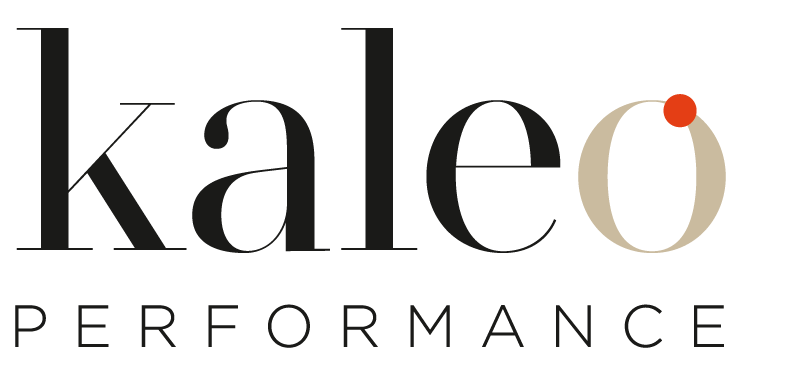Purpose of this article: To explain Service Integration and Management (SIAM), explore its benefits and drawbacks, identify suitable use cases.
Introduction
The global IT outsourcing market is expected to increase by 9,3% in 2025 compared to 2024 (Gartner) This growth is fuelled by the constant pressure on expenses, the rapid pace of digital transformation especially in GenAI.
There are various models for IT outsourcing, ranging from complete outsourcing with one vendor to a partial in-house IT team with multiple IT vendors. Each approach offers distinct advantages and disadvantages.
Complete outsourcing, while simplifying management, relies on a single vendor, which may not provide the optimal solution across the entire IT landscape (e.g., data center, cloud management, end-user workplace services, cybersecurity). Managing multiple vendors presents its own set of challenges.
Definition
Service Integration and Management (SIAM) is a framework and governance model, not a specific technology or tool. It ensures seamless service delivery by orchestrating multiple providers, with a single point of accountability.
1- The Evolving Landscape of IT and the Rise of SIAM
The modern IT landscape is characterized by an increasing reliance on outsourcing, driven by the desire to access specialized expertise and cutting-edge technologies—especially as Generative AI grows. This multi-vendor environment, while offering advantages, creates significant challenges. Without a cohesive strategy, organizations face fragmented service delivery, communication silos, and a lack of end-to-end control. This complexity can hinder agility, increase risk, and make it difficult to ensure accountability.
SIAM: Unifying IT Service Delivery
Service Integration and Management (SIAM) emerges as a solution to address these challenges. SIAM provides a governance framework that ensures seamless service delivery across multiple providers, with a single point of accountability.
This model revolves around a service integration layer, with standardized processes, integrated tools, and skilled personnel focused on vendor management and IT governance.
2 – Key Components and Principles
Key Components of a SIAM Model:
- Governance: Processes, policies, and standards for managing service integration.
- Service Integration Layer: The layer responsible for coordinating and integrating services from different providers.
- Processes: Standardized processes for incident management, change management, problem management, etc., across all providers.
- Tools: Integrated tools for monitoring, reporting, and managing service performance.
- People: Skilled personnel with expertise in service integration, vendor management, and IT governance.
3. The SIAM Model: 3 main approaches
- Internal Broker (Lead Enterprise): The organization retains overall responsibility for the IT strategy and outsources the integration layer to a SIAM provider. This is a common approach when the enterprise wants to retain strategic control and a strong business footprint.
- External Service Integrator: A third-party provider is hired to manage the service integration layer. This model provides specialized expertise, requiring careful vendor selection and management, typically overseen by the retained IT team.
- Internal Service Integrator: The organization creates its own internal SIAM function to manage service integration. This model offers more control and requires significant investment in skills and resources. However, it helps retain IT expertise, fosters a strong business intimacy with IT, and develops resilience to challenges with service providers.
4. Who Is Using SIAM ? Ideal Use Cases
Suitable Companies:
- Large enterprises with complex, multi-sourced IT environments.
- Organizations in highly regulated industries (e.g., finance, healthcare) that require strong governance and control.
- Companies undergoing digital transformation initiatives.
Ideal Scenarios:
- Outsourcing of multiple IT functions (e.g., infrastructure, applications, help desk).
- Transitioning from a single vendor outsourcing model to a multi-vendor approach.
- Mergers and acquisitions that require integrating IT systems and services.
- Organizations seeking to improve service quality and reduce costs.
5. Who Are the Service Integrators? Common Players
- Large IT Service Providers: (Accenture, Capgemini, Tata Consultancy Services, Infosys, Wipro, IBM) – Often offer SIAM as part of their broader outsourcing services.
- Specialized SIAM Providers: (Some consulting firms and niche players) – Focus solely on service integration and management.
- Consulting Firms: (Deloitte, McKinsey, Boston Consulting Group) – May offer SIAM consulting and implementation services.
- Internal IT Departments: Some organizations choose to build their own internal SIAM capabilities.
6. Trends and Future of SIAM: Best of Breed vs. Vertical Integration
Trend 1: Best-of-Breed Providers:
Companies select the best provider for each domain (e.g., cloud, security, networking). SIAM is crucial to integrate these specialized providers effectively.
- Pros: Access to the best expertise in each area; increased flexibility and innovation.
- Cons: Greater complexity in management and integration; potential for finger-pointing between providers.
Trend 2: Vertical Integration/ Full-Stack Provider:
- Description: A single provider manages a large portion of the IT stack.
- Pros: Simplified management; single point of contact; potentially lower costs.
- Cons: Less flexibility; potential for vendor lock-in; may not have the best expertise in every area.
Which approach is better? The optimal choice depends on the organization’s specific needs, priorities, and risk tolerance.
Future Trends:
- Increased automation of service integration tasks.
- AI-powered service management for proactive issue resolution and optimization.
- Greater emphasis on achieving measurable business outcomes and demonstrating value.
7. Implementing SIAM: Key Considerations and Best Practices
- Assess Readiness: Evaluate your organization’s maturity, processes, and skills.
- Define Scope: Determine which services and providers will be included in the SIAM model.
- Establish Governance: Define clear roles, responsibilities, and decision-making processes.
- Develop standardize processes across all providers (Incident, Change, Security.)
- Implement integrated tools for monitoring, reporting, and management.
- Train personnel in service integration, vendor management, and IT governance.
- Start Small, learn fast and Iterate: Don’t try to implement everything at once; begin with a pilot project and gradually expand the scope.
Conclusions
Based on my direct experience orchestrating SIAM initiatives, I’ve observed that its true power lies in achieving a balance between leveraging best-of-breed providers and ensuring overall IT resilience. A successful SIAM implementation isn’t just about cost optimization; it’s about building an agile and robust IT ecosystem capable of adapting to rapidly evolving business needs.
Specifically, I’ve found that engaging a third-party service integrator while empowering the in-house IT team to focus on business alignment is a particularly effective strategy. The key is to have the in-house team act as the vital link, translating business-driven Service Level Objectives (SLOs) into tangible IT Service Level Agreements (SLAs) that the service integrator can then actively monitor and manage.This ensures that IT service delivery remains tightly coupled with business priorities. Further, it enables in-house expertise to work on resiliency and business continuity plans.
- Call to Action: To determine if SIAM is the right strategy for your organization, I recommend conducting a thorough assessment of your current IT capabilities and performance, evaluating your existing IT provider relationships, and actively engaging with business stakeholders to understand their satisfaction levels. Critically, consider how well-positioned you are to capitalize on future technological advancements within your current IT setup.
- Final Thought: In an era of ever-increasing IT complexity, driven by the pervasive integration of AI and the constant evolution of the threat landscape, embracing a well-defined SIAM framework is no longer a “nice-to-have,” but a “must-have” for organizations seeking to build lasting resilience and maximize the strategic value of their IT investments.

